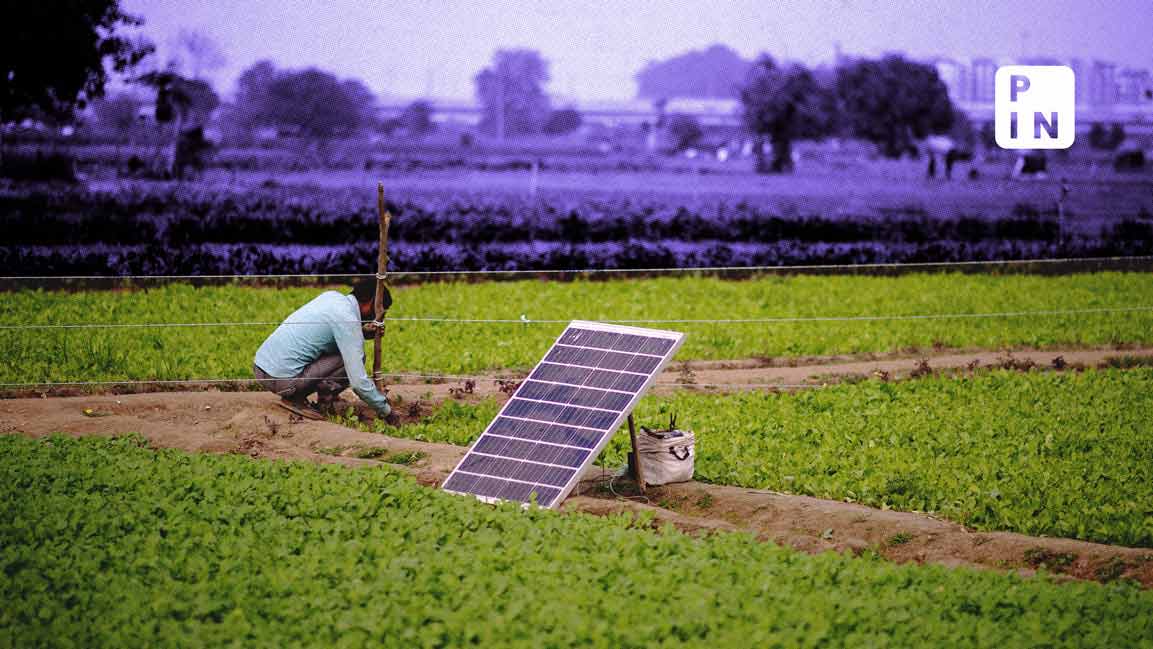- | 11:32 am
IMF projects India’s GDP growth at 6.1%: Is this strong and adequate?
It is essential for India to achieve very strong GDP growth to uplift millions of its citizens still living in poverty and improve their quality of life

In its July World Economic Outlook Update, the International Monetary Fund (IMF) raised its projection for India’s GDP growth to 6.1% for 2023, a 0.2% upgrade “reflecting momentum from stronger-than-expected growth” in the October-December 2022 quarter “as a result of stronger domestic investment”.
Earlier in April, during the post-WEO conference, IMF Division Chief Daniel Leigh had termed India a “very strong economy” and noted India as “one of the bright spots in the global economy right now”. In the July Update press conference, IMF described India’s economy as “growing quite strongly”; however, the “bright spot” reference was missing.
It is essential for India to achieve very strong GDP growth to uplift millions of its citizens still living in poverty and improve their quality of life. However, the question remains whether India’s current growth rate is strong and adequate to meet this objective.
India’s real competitors
IMF classifies countries into two broad groups: advanced economies (AEs) and emerging market and developing economics (EMDEs), which is further divided into two groups – low-income developing countries (LIDCs) and emerging market and middle-income economies (EMMIEs), based on the income classification of the World Bank.
Based on per capita gross national income (GNI) of the 217 countries in the World Bank database, 83 countries are classified as high-income countries (HICs), which include all the 41 AEs, 108 are MICs divided into upper middle-income countries (UMICs) and lower middle-income countries (LMICs) – 54 each – and 26 are low-income countries (LICs).
India with a per capita GNI of $2,380 is classified as an LMIC and an EMMIE.
Compared to AEs with low agriculture incomes, high per capita incomes, and stagnating or declining populations, India stands apart with a higher share of agriculture, particularly in employment, low per capita income, and a growing population. Unlike, AEs which only need to and can generate low GDP growth, India needs a higher level of growth.
India is primarily in competition with 108 MICs. Many MICs, though, are quite small in terms of population or GDP, or both. There are 25 major MICs with at least $100 billion annual GDP and a minimum of 10 million of the population in 2022. Excluding Cuba, for which all data is not available, the remaining 24 MICs constitute India’s real competitors in the matter of GDP growth and improving the quality of life of their people.
India’s GDP performance vis-à-vis its peer group
In comparison to the 24 competitor countries, India’s GDP growth of 6.8% in 2022 was outperformed by five countries: Bangladesh (7.1%), Colombia (7.5%), Malaysia (8.7%), Philippines (7.1%), and Vietnam (8%). Furthermore, looking at the compounded annual GDP growth rate between 2019 and 2022, nine countries in the peer group period – Angola (12.8%), Argentina (11.9%), Bangladesh (9.4%), China (8.1%), Dominican Republic (8.1%), Egypt (14.3%), Iran (13.4%), Kazakhstan (7.5%), and Vietnam (7%) achieved higher growth rates than India’s 6.1% during that period.
Even considering a longer period from 2013 to 2022, India’s growth rate of 6.9% was surpassed by three countries: Bangladesh (11%), China (7.3%), and Vietnam (7.5%).
Looked at from any of the standpoints, India’s growth performance was not the best and the brightest. Bangladesh, China, and Vietnam, India’s big competitors in the development & growth sweepstakes in our close neighborhood, did much better.
India did better than many of its MIC peers. That, however, provides little satisfaction as India has the most formidable challenge of generating much higher growth that can uplift millions out of poverty and afford them at least a decent middle-income quality of life.
India has to reform for achieving higher future growth
Looking ahead, the IMF projects India’s GDP at $5.58 trillion for 2028, factoring in a compounded annual growth rate of 8.82%. However, India has struggled to achieve such growth in the last nine years, even though it attained higher compounded annual growth of over 13% during 2003-2013. This is evidence that India can attain sustained high growth of 10% plus over a long period.
India’s current growth performance is, to an extent, artificially bolstered by high doses of capital expenditure by the government made possible by running unsustainable high fiscal deficits. To attain GDP growth of 10 percent or higher, India needs to attract significant private investments, both domestic and international, and improve the productivity of its capital, labor, and economic policies.
The views are personal.













